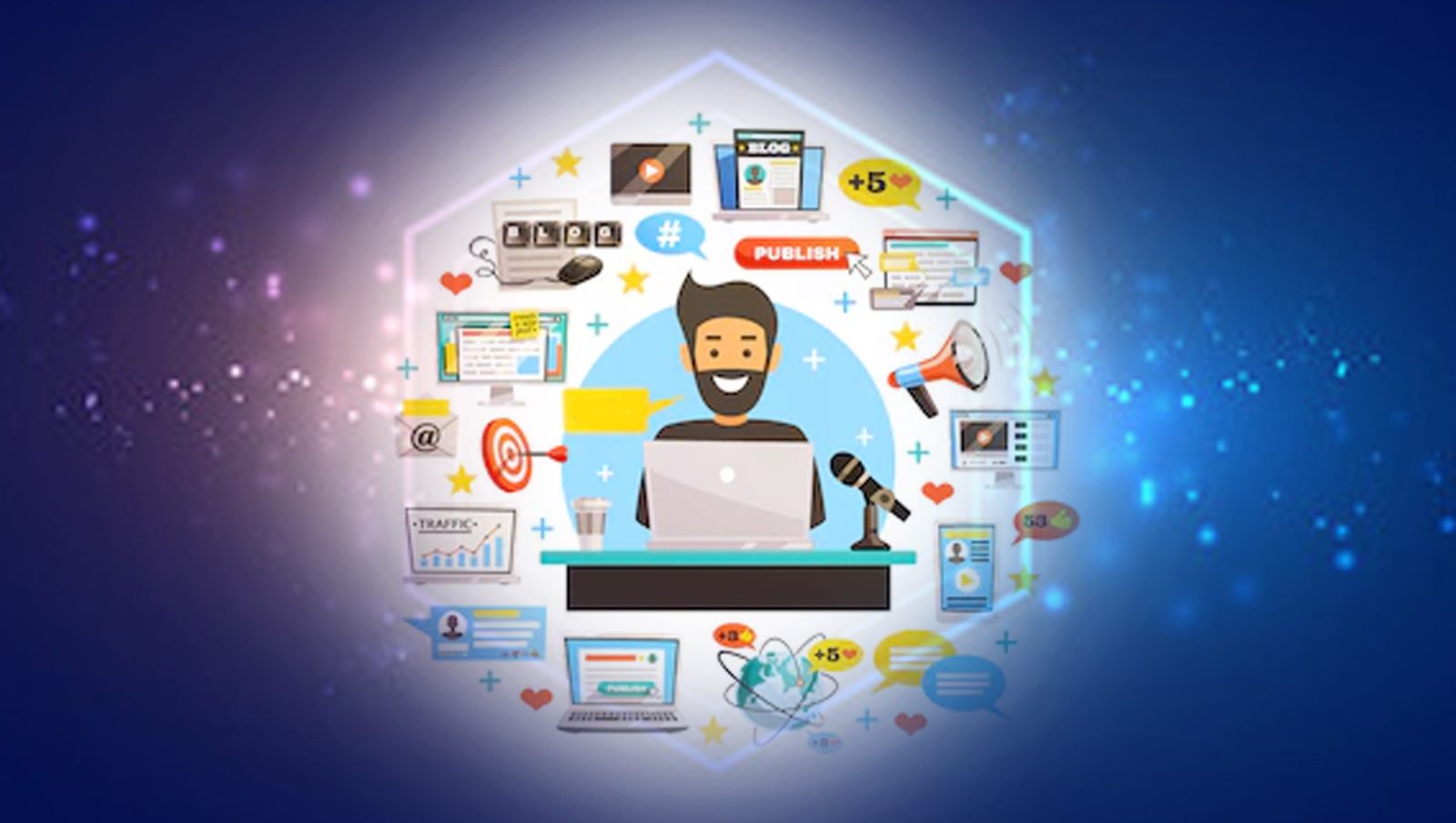In today’s interconnected world, customers expect the ultimate level of personalization relevant, timely and seamless at every interaction. However, personalization at scale remains one of marketing’s biggest challenges. Enter API-based content. With API-based content, brands can easily create dynamic experiences through systems with real-time insights, structured content and connections. Instead of producing overly tailored campaigns every single time, API driven content gives marketers the ability to rely on interconnected systems that make intelligent adjustments in the moment without compromising consistency or efficiency. Whether it’s through historical data or real-time user experience, personalization becomes an effortless action by the marketer.
The Need for Scalable Personalization.
With customers interacting with brands on websites, mobile apps, emails, chatbots, and even smart devices, they naturally expect those moments to feel interconnected and deeply personal. Yet when tens of millions of users are simultaneously accessing different channels, personalization becomes immensely complicated. More often than not, marketing systems in place depend on rigid templates or content repositories holed up in silos, making them inflexible and incapable of real-time adaptation.
API-based content creates a solution by dynamically enabling systems to communicate and respond in real time. Resolve content processes help ensure that all connected APIs deliver accurate, contextual, and up-to-date information across every channel. From a simple tracking of consumer behavior to understanding location-based insights, marketing and business teams can use APIs to deliver the best possible response—be it an immediate product suggestion, an offer based on geo-targeting, or a message based on digital engagement. And suddenly, scalable personalization is not just possible but doable (and sustainable!) for the modern marketing team.
What is API-Based Content Delivery?
APIs Application Programming Interfaces are lines of code that connect two different systems. Content delivery through API or API-based content often describes the content NOT governed by templates or page structures.
Instead, a Headless CMS acts as a central source of content storage, where materials are stored as structured data. For example, instead of having ten different image templates with the same framed image as an offer, there would be one location for that image within the Headless CMS, where proper coding allows for easy access and usage by other systems.
In turn, many channels can leverage the same “API-based” pieces of information from text to images to offers and reshape them as needed. In addition, when APIs are combined with CRMs or analytic tools that store consumer data, API content becomes highly malleable. A simple call to an API can return content based on location, device type, or purchase preference and suddenly, anyone feels like the personalization is immediate.
API-based content further drives this alignment through technology, creative accessibility, and strategic support to establish rapid personalization at scale.
How Headless CMS Powers API-Based Personalization
A Headless CMS is imperative when it comes to API-based content delivery. Unlike traditional CMS approaches that couple where content lives with where it will ultimately be presented to the public (on the front end), a Headless CMS has a separation of concerns.
Content is stored and stored well with structured data and other code components that allow content creators to make suggestions regardless of where digital assets will end up on websites, mobile platforms, emails, or even IoT devices.
This creates a comprehensive approach from a centralized source while simultaneously encouraging disparate avenues where pieces may ultimately reside. It essentially helps brands personalize everywhere without starting from scratch every time.
Since it’s a single source of truth for all content, marketers can create it once and then allow developers and other integrations via APIs to recirculate it in real time. When everything is aligned through a Headless CMS, it’s easier for personalization to spread across touchpoints and relevant messaging everywhere.
Where Data Meets Dynamic Content
API-based personalization is powered by data. A Headless CMS can connect with an analytics platform, a CRM, or even an AI engine to understand the user purchase history, website engagement, location and generate the appropriate content response in real time.
For example, a user browses sneakers on a retail website. An API may create an immediate response in-app notification for the mobile version of that site showing similar sneaker options. The same data may translate into an email later that day highlighting those same shoes and a discount. The data bridge operating through APIs between CMS content and other connective technologies generates a feedback loop between users and brands in real time.
How API-Based Content Personalization Scales Across Channels
Since a Headless CMS relies on centralized content stored within and sent out through its API offerings, scaling content personalization across channels becomes seamless. A single source of truth can be applied across various channels using specific formatting to reflect different audiences.
For example, a national company may have in-store recommendations based on data driven from its online purchase history. The Headless CMS can parse the same structured data to create signage for in-store and at-the-register applications while also executing marketing emails. The ability to use one piece of data across channels applying to various situations helps prevent confusion and fragmentation of the brand experience.
Speed to Real-Time Campaign Adaptation
Campaigns need to be flexible for the modern-day marketer. With trends emerging and disappearing at the drop of a hat, constant customer acquisition waves emerging, and new problems cropping up that brands can help solve, there’s no time to waste. Without having to recreate assets, API-based content allows marketers to shift language, change offers or localization, and pivot practically in real time.
Time-sensitive campaigns especially benefit as a single point of contact from the Headless CMS can adjust parameters through the CMS that the API reads dynamically across all intersecting platforms. Real-time campaign changes avoid static campaigns while enhancing user engagement with the most recent and relevant content.
Context, Not Just Demographic, Personalization is the Future
Most personalization that already exists is based on things we all know. This includes things like age, gender, and location. Content that is API-led takes it one step further by incorporating contextual signals, like the time of day, the device the customer is on, and the customer’s intent at that moment. When brands can tap into such contextual signals through content APIs, they can customize aspects based on what’s actually going on around them.
For example, if someone is aimlessly exploring an app dedicated to travel in the afternoon when it is gray and cloudy outside, instead of just receiving generic vacation packages in random locations, the ideal API-driven content will come from presenting vacation packages to warm-weather destinations or last minute flights. Contextual awareness makes someone feel human and that your brand understands not just WHO they are but WHAT they want at this specific moment in time.
Predictive Personalization Through AI and API Based Content
AI can assist with API based content through predictive personalization as well. AI captures customer data in the moment and analyses it with machine learning capabilities to predict what someone might want next. The API is made aware of this prediction and content is sent at the next immediacy.
For example, a fashion retail AI engine might recognize based on past buying patterns that a user buys spring dresses every year consistently. Therefore, once spring rolls around the next time, AI will send a message about the new collection launch for the user. The API ensures it’s sent across engagement methods to ensure the right user sees it, in the right way, at the right time. AI and API based content work symbiotically to take personalization up a notch.
Personalization Doesn’t Mean Cluttering The Brand Image
When accessing dynamic content across multiple channels, proper brand consistency is essential for anything personalized to make sense. A Headless CMS safeguards global brand guidelines across all of these different variations. Marketers can use APIs to create rules about tone, design and messaging for brand consistency so that everything remains recognizable.
There is a fine line between letting go of control to customize content on behalf of a customer while still keeping a strong identity of what a brand is asking personalization to do. Ultimately, however, consistency fosters trust and it’s that trust that further impacts the success of personalized marketing.
Facilitating Team Collaboration
In order to provide personalization at scale, marketers, designers and developers must work together. API-based content facilitates this process with a common system as the foundation for all teams to work independently yet collaboratively. Marketers can run campaigns and segments from their CMS, designers create adaptable visuals, and developers make integrations for everything from dynamic display to preferences.
By having content in a more modular sense, areas are less likely to bottleneck, and everyone can expedite. Marketers don’t have to wait for developers to continually adjust certain aspects when APIs send what they need automatically, as long as they facilitate this programming from the start. This results in iterative approaches to creativity and personalization instead of more strategic thinking constrained by time and labor.
Omnichannel Personalization
The other benefit of personalized content as an API-based offering is that it’s not just for campaigns, but for an omnichannel experience. API-based content allows marketers to connect all systems regardless of team or third party. Should a consumer use their app to transition to mobile or web and even third-party assessments everything will remain consistent.
This means that instead of interacting in a disparate way across channels, the omnichannel experience becomes another personalized channel that has real-time metrics updating it on-the-go. A user gets a notification in the app about a product restock they recently viewed which further connects them back into the funnel via email with complementary suggested purchases. Every touchpoint becomes interlinked through a single system of APIs operating under personalization guidance.
Measurement of Personalized Campaigns
Finally, the benefit of API-based content is that everything can be measured, assessed and improved. By having everything go through the API, marketers have concrete data at their fingertips without question. They can see which iterations are performed most, by whom and through what funnel channel (account, app vs. site vs. social) the interaction occurred.
Therefore they can use this information to further enhance personalization success, in real time; part of APIs is making sure that what’s working can be recognized rapidly and what’s not working can be optimized immediately as well. Personalization only becomes smarter as it iterates over time, improving accuracy and investment returns.
Preparing for What’s Next in Personalization
The digital world is ever-changing, and with new platforms and connected devices emerging all the time, how can brands ensure that their personalization strategy won’t become outdated? API-based content promises an adaptable, scalable alternative, separating the production and distribution process from what and how brands present data. When the framework is decoupled, this means that devices, interfaces and even sources of information can be added without needing to restructure everything.
Whether marketing through voice activation or AR experiences or fully integrated environments, understanding the importance of flexibility and connectivity ensures operations for the future can be sustained. When they do, future connections will allow brands to continue to offer personalized, data-driven communication no matter where consumers go.
Making Scale an Operational Benefit Rather than a Strain
Personalization at scale isn’t just about the tools to help make it happen, either. It’s about a strategy. With API-driven content, brands can grow and keep up with relevant needs as audiences expand, for personalization never gets tedious or overwhelming. Instead of managing multiple geo-targeted campaigns using duplicated assets or localized messaging, marketers now have a structured approach to API-delivered content that redefines how easier it is to personalize at any level.
As a result, team members are no longer bogged down by manual restrictions but can use their time for creative benefits for truly personalized responses. Whether speaking to ten customers or ten million, personalization looks the same. API-inspired personalization takes a potential operational hurdle of scale and makes it a preferential opportunity for a strategic asset one that makes something easy out of something that would otherwise be difficult.
Conclusion: Deliver Personalization as Fast as Relevance Does
Success no longer depends on delivering personalization that’s just targeted, but rather, delivered at the same speed as relevance. API-based content brings together all the efforts through a connected realm of data acquisition that combines creativity and technology together into one fluid solution. As a result, brands can save time and resources by ensuring every consumer lives a unique experience with the best effort behind it.
With a structured approach to content creation through Headless CMS architecture and the ability to connect through API to expedite efforts, marketers can finally work within true personalized parameters at scale responsive, data-driven opportunities that make necessary adjustments endlessly adaptable. In an era of relevance driven by instantaneous engagement options, API-based personalization is not only the stepping stone to successful marketing in the future, it’s the most effective method of building relationships through relevance.










